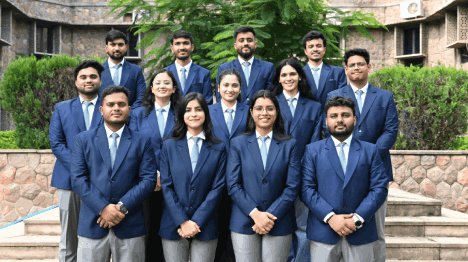- About Us
- Academics
Schools
Programs
General Information
- Faculty
The faculty members and researchers working at IIHMR University come from varied backgrounds including, but not limited to medicine, public health, management, economics, statistics, demography, human geography, social and behavioral sciences, rural development and pharmaceuticals.
- Admissions
- Research
.Publications & Journal
- Executive Education
Executive Programmes
- Online Certification Courses
ONLINE CERTIFICATION Courses
- Training
- Placements
- Fee Payment
- NAAC
- IQAC
- NIRF
- Webinars
- About Us
- About IIHMR University
- Board of Management
- Academic Council
- Board of Studies
- Research Board
- Institutional Review Board
- Finance & Audit Committee
- Departmental Research Committee
- Chairperson's Message
- President's Message
- IIHMR University Act
- Infrastructure
- Collaboration
- Ranking
- Board of Studies (School of Digital Health)
- Awards & Accolades
- Academics
- Institute of Health Management Research
- School of Pharmaceutical Management
- School of Development Studies
- School of Digital Health
- SD Gupta School of Public Health
- MBA (Hospital and Health Management)
- MBA (Pharmaceutical Management)
- MBA (Development Management)
- MBA (Healthcare Analytics)
- Master of Public Health
- Student Manual – Cohort 9 (2021-2023)
- Master of Public Health (Cooperative programme with Johns Hopkins University)
- Ph. D.
- MBA CSR & ESG Management (Executive)
- MBA Sustainable Business Management (Executive)
- Common Information for all the Programs
- Academic Calendar
- Student Handbook 2020-21
- Committees
- Policies
- Annual Exam Calendar
- Library
- Faculty
- Officers of University
- Dean of Institute of Health Management Research
- Dean of School of Pharmaceutical Management
- Dean of School of Development Studies
- Dean of SD Gupta School of Public Health
- Dean of School of Digital Health
- School of Digital Health
- Faculty List A to Z
- Faculty List Designation Wise
- Faculty List School Wise
- Admissions
- Research
- Executive Education
- Training
- Placements
- Alumni
- Events
- Job Openings
- Contact
- Research
Independent assessment of NGOs working in the RNTCP
Agency : Central TB Division, MoHFW, Government of India
The objectives of the study were: a) to assess the overall capacity and contribution of NGO to overall performance of RNTCP to establish relevance of the NGOs involvement to the mandate of TB control program at the district level; b) to study the scheme components under the program, its planning, implementation, monitoring, evaluation and efficacy; c) to review organizational structures of NGOs involved for RNTCP; d) to assess staffing (both technical and managerial) pattern in the NGO in line with prescribed procedure and norms; and also to assess requirements for efficient and effective project implementation; e) to assess competency and performance of the staff involved under RNTCP against the given roles and responsibilities at the NGO level; f) to review the management information system (recording and reporting mechanisms) as per RNTCP guidelines; g) to assess the utilization of program funds and fund management at the NGO; h) to evaluate coordination mechanism with the district program cell; and i) to recommend suitable changes in the program strategy, if necessary. Four states, namely Andhra Pradesh, Jharkhand, Rajasthan and Uttar Pradesh were covered under the study. The consultations were conducted with the Central TB Division, State TB Office and District TB Offices and a group of selected NGOs working with the Central TB Division.
All the NGOs visited during the assessment were working in relatively poor areas and stated that their mission was to serve the poorest strata of the society. It was observed that the documentation of the planning was almost non- existent. The DTOs are technical persons by training and they give higher weightage to the clinical component. The monitoring was perhaps the strongest part of the RNTCP and it worked really well. The strong point of the community awareness was in the form of informal contacts with the community and home visits. This was claimed to be a successful model and was reportedly working well. The fund flow and its utilization also varied from state to state. In some states there was considerable delay in the release of funds to the NGOs whereas in others it was promptly released. There was good coordination between the NGOs and DTC.



